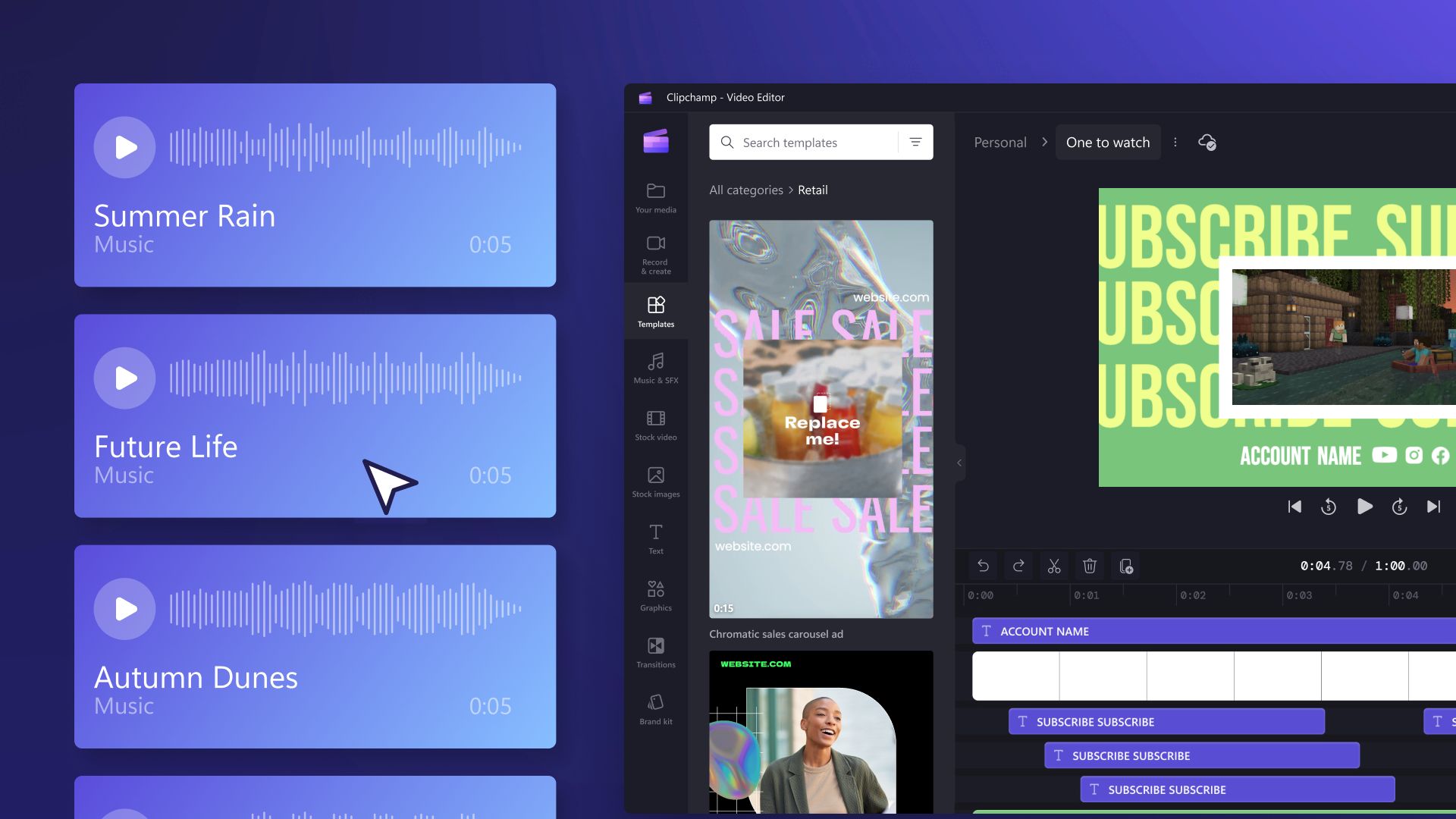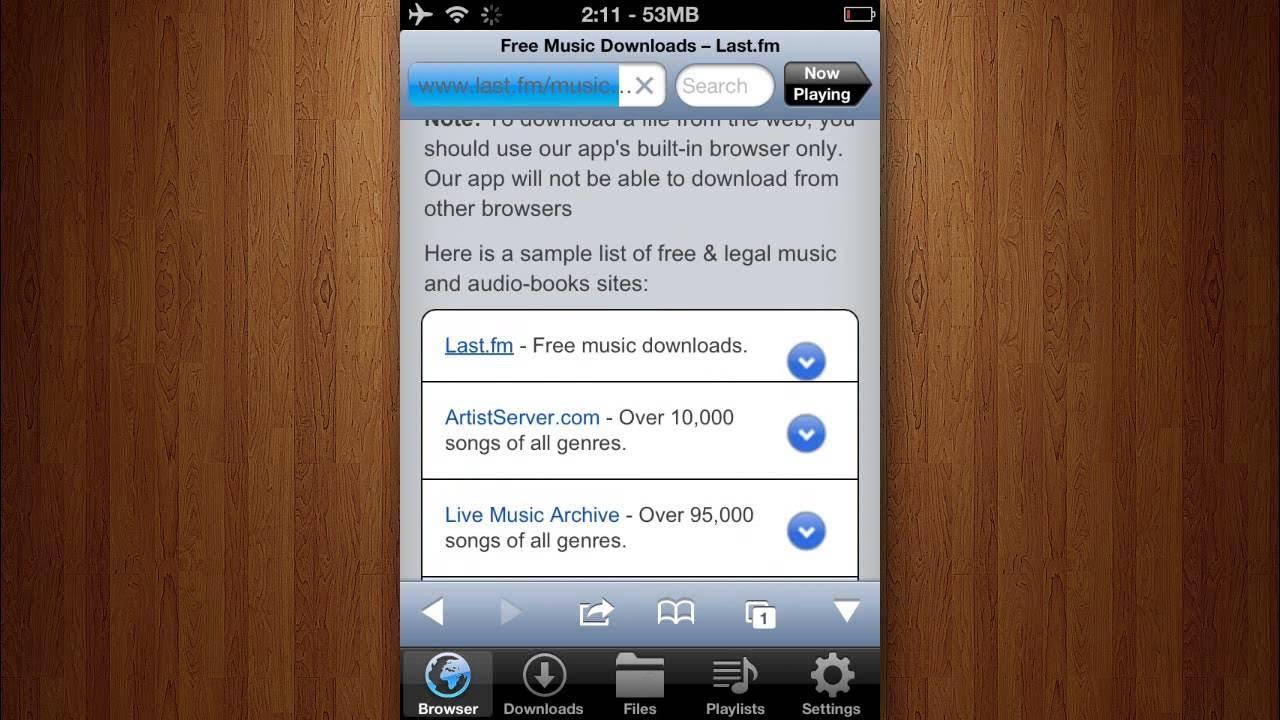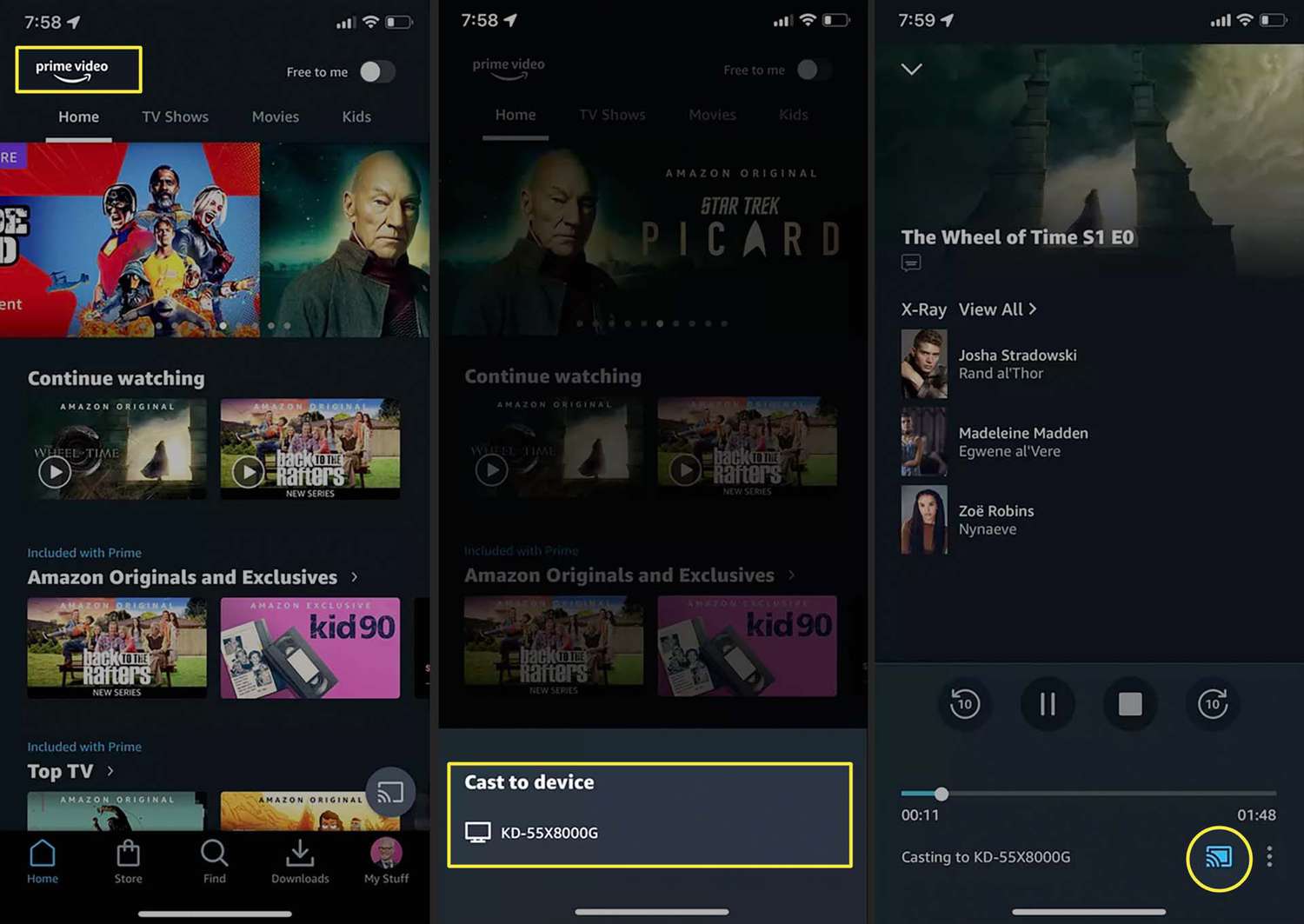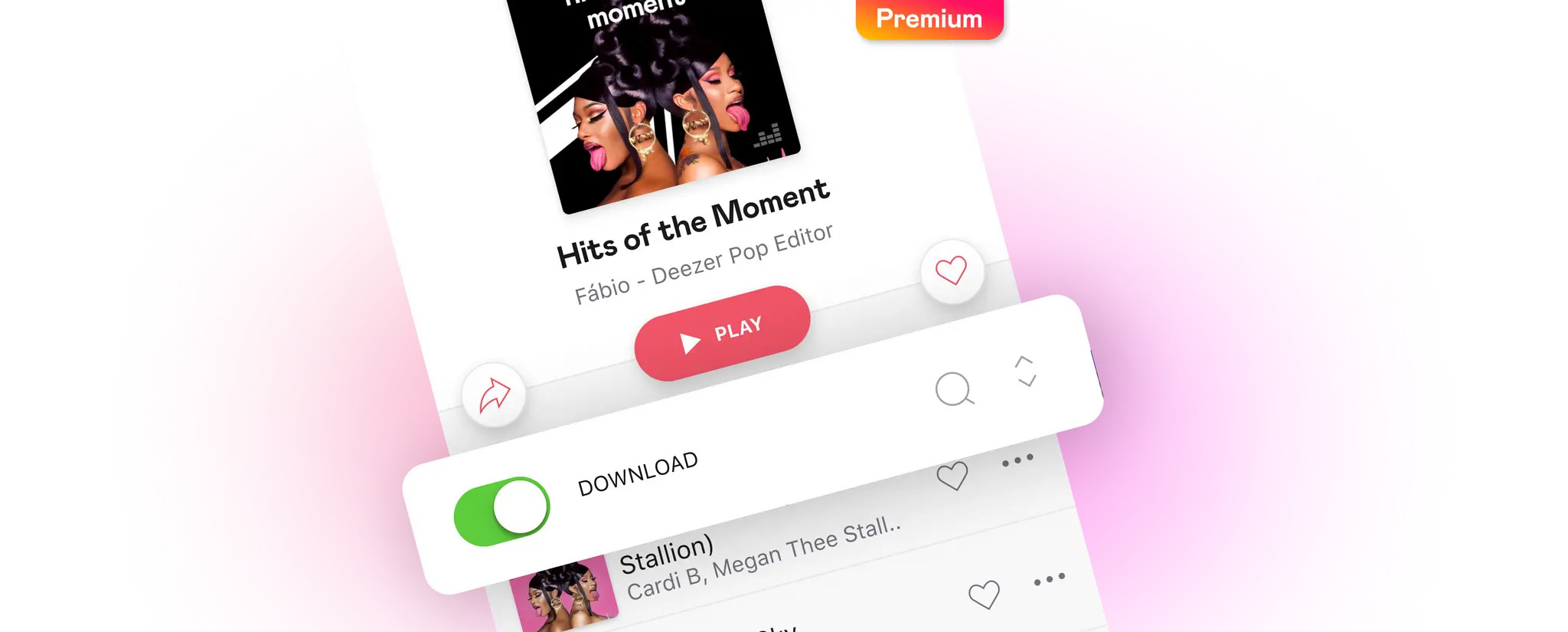Introduction
Background music adds depth and atmosphere to songs, making them more engaging and memorable. Whether you’re a music enthusiast, a content creator, or simply looking to enhance your listening experience, being able to download the background music of songs can be a valuable skill. By extracting the background music, you can enjoy it separately or utilize it for various creative purposes.
There are several methods you can use to download background music from songs. In this article, we will explore five effective techniques that cater to different requirements and preferences. These methods include using online converters, extracting background music using software, ripping music from a CD, extracting music from videos, and downloading royalty-free background music.
Before we dive into the specific methods, it’s important to highlight the importance of respecting copyright laws and licensing agreements. While it may be tempting to download any song’s background music without permission, it’s crucial to ensure you have the necessary rights to use the music legally. Always check the terms and conditions or seek royalty-free alternatives to avoid legal issues.
Now, let’s delve into the various methods that will help you download background music from songs, allowing you to enjoy, create, and enhance your music experience.
Why Download Background Music
Background music plays a significant role in setting the mood, evoking emotions, and enhancing the overall impact of songs. Here are a few reasons why you might want to download background music:
- Creative Freedom: By extracting background music from songs, you gain the freedom to use it in a variety of creative projects. Whether you’re making your own music or creating content for videos, podcasts, or presentations, having access to background music can elevate the quality and appeal of your work.
- Personal Enjoyment: Sometimes, you may come across a song with a captivating background melody that you want to listen to independently. Downloading the background music allows you to enjoy it separately, appreciating the intricate harmonies, instrumentals, or beats that contribute to the song’s overall composition.
- Remixing and Sampling: Background music extraction opens up possibilities for remixing and sampling. By isolating the background music, you can create your own unique versions of songs, blend elements into new compositions, or use samples in your own musical productions.
- Content Creation: For content creators, having access to background music is invaluable. Whether you’re producing videos, podcasts, or presentations, incorporating appropriate background music can amplify the viewer’s experience, evoke specific emotions, and provide a professional touch to your content.
- Learning and Analysis: Downloading background music allows you to study and analyze various aspects of a song. Whether you’re an aspiring musician, music producer, or audio engineer, dissecting the background music can provide insights into the composition, arrangement, mixing, and mastering techniques employed in the song.
Overall, downloading background music from songs opens up a world of possibilities. It empowers you to exercise your creativity, customize your music listening experience, and elevate the quality of your own creations. Now that we understand the importance of downloading background music, let’s explore the different methods you can use to achieve this.
Method 1: Using an Online Converter
One of the easiest ways to download background music from songs is by using an online converter. These converters allow you to extract the audio from a song and save it as a separate file. Here’s how you can do it:
- Find a reliable online converter: There are several online converters available, so choose one that is reputable and has positive user reviews.
- Upload the song: Once you’ve selected an online converter, upload the song from which you want to extract the background music. Most converters support a variety of audio file formats.
- Select the audio format: Choose the audio format in which you want to save the extracted background music. Common options include MP3, WAV, and AAC.
- Configure the settings (optional): Some online converters offer additional settings such as adjusting the audio quality, bitrate, or selecting specific portions of the song to extract. Explore the available options and adjust them according to your needs.
- Initiate the conversion: Once you’ve configured the settings, initiate the conversion process. The online converter will process the uploaded song and extract the background music as a separate audio file.
- Download the extracted background music: After the conversion is complete, you will typically be provided with a download link. Click on it to save the extracted background music to your device.
Using an online converter is convenient and user-friendly, making it accessible to both beginners and experienced users. However, keep in mind that the quality of the extracted background music may vary depending on the converter and the settings you choose.
It’s also important to note that some online converters may have limitations or restrictions, such as file size limitations or requiring you to create an account. Be sure to review the terms and conditions of the converter before using it.
Now that you’re familiar with the first method of extracting background music, let’s explore another approach: using software to accomplish the task.
Method 2: Extracting Background Music Using Software
If you prefer more control and advanced options when extracting background music from songs, using dedicated software is a great choice. Software tools offer a wide range of features to extract and save background music in different formats. Here’s how you can use software to extract background music:
- Choose reliable software: Look for reputable software that specializes in audio extraction. Popular options include Audacity, Adobe Audition, and Filmora.
- Install and launch the software: Download and install the software on your computer. Once installed, open the software to start the extraction process.
- Import the song: In the software, import the song from which you want to extract the background music. This can typically be done by clicking on the “Import” or “Open” button and selecting the desired file from your computer.
- Select the portion to extract: Use the software’s editing tools to select the specific portion of the song that contains the background music. Trim and adjust the selection as needed to isolate the background music accurately.
- Configure the settings: Customize the output settings, such as the format, bitrate, and quality of the extracted background music. Different software tools offer various options, so explore them and adjust as required.
- Initiate the extraction: Once you’ve configured the settings, initiate the extraction process within the software. The software will process the selected portion of the song and save it as a separate audio file.
- Save the extracted background music: After the extraction is complete, the software will prompt you to save the extracted background music. Choose a destination folder on your computer and save the file with a suitable name.
Using software provides you with precise control over the extraction process, allowing you to fine-tune the settings and select specific portions of the song. Additionally, software tools often offer advanced features like noise reduction and audio enhancement, enabling you to enhance the quality of the extracted background music.
However, keep in mind that using software might require a learning curve, especially if you’re new to audio editing. Spend some time familiarizing yourself with the software’s features and functions to make the most of its capabilities.
Now that you’re acquainted with the second method of extracting background music, let’s explore another technique: ripping background music from a CD.
Method 3: Ripping Background Music from CD
If you have a physical CD with the song from which you want to extract the background music, you can use a CD ripping software to accomplish this. CD ripping allows you to convert the audio tracks on a CD into digital files, including the background music. Here’s how you can rip background music from a CD:
- Choose a CD ripping software: Look for a reliable and user-friendly CD ripping software. Popular options include iTunes, Windows Media Player, and Exact Audio Copy.
- Insert the CD: Insert the CD containing the song into your computer’s CD/DVD drive. The CD ripping software should recognize it automatically.
- Select the songs and adjust settings: In the CD ripping software, select the songs from the CD that you want to rip. You may have the option to select individual tracks or rip the entire album. Adjust any necessary settings such as the file format and bitrate for the ripped background music.
- Start the ripping process: Once you’ve made your selections and adjustments, initiate the ripping process by clicking on the appropriate button in the software. The software will read the CD and convert the selected tracks into digital audio files.
- Confirm the save location: After the ripping process is complete, the software will prompt you to choose a destination folder to save the ripped background music files. Select a suitable location on your computer and proceed with the saving process.
- Access the extracted background music: Once saved, you will have the extracted background music as separate audio files on your computer. You can now use them for various purposes or enjoy them independently.
CD ripping is a straightforward method to extract background music, especially if you have a physical CD. It allows you to preserve the audio quality and conveniently save the background music onto your computer for future use.
Remember to ensure that you have the necessary rights to extract and use the background music from the CD, especially if it’s protected by copyright. Always respect the artist’s intellectual property and the relevant licensing agreements.
Now that you’re familiar with the third method of extracting background music, let’s explore another technique: extracting background music from a video.
Method 4: Extracting Background Music from Video
If you come across a video that contains a song with captivating background music, you may want to extract it for separate use. Extracting background music from a video allows you to enjoy the music independently or utilize it for other creative purposes. Here’s how you can extract background music from a video:
- Choose a video editing software: Select a video editing software that supports extracting audio from videos. Popular options include Adobe Premiere Pro, Final Cut Pro, and VLC Media Player.
- Import the video: In the video editing software, import the video file from which you want to extract the background music. This can typically be done by clicking on the “Import” or “Open” button and selecting the desired video file from your computer.
- Separate the audio track: Once the video is imported, look for the option to separate the audio track from the video. In most video editing software, this can be achieved by right-clicking on the video clip and selecting “Detach Audio” or a similar option.
- Trim and export the audio: Use the editing tools in the software to trim the audio track, removing any unwanted portions. Once you have the desired segment, export it as a separate audio file. Choose the appropriate format and quality settings for the background music.
- Save the extracted background music: After exporting, select a destination folder on your computer to save the extracted background music. Give it a suitable name and click on the “Save” button to complete the process.
Extracting background music from a video allows you to enjoy the music independently or utilize it for various purposes. You can incorporate the background music into your own videos, use it as a creative element in content production, or simply enjoy it as a standalone audio track.
It is important to be aware of any copyright restrictions or licensing requirements when extracting background music from videos. Respect the intellectual property rights of the original content creator and seek permission or use royalty-free alternatives when necessary.
Now that you’re familiar with the fourth method of extracting background music, let’s explore another approach: downloading royalty-free background music.
Method 5: Downloading Royalty-Free Background Music
If you prefer a hassle-free and legally sound option for obtaining background music, downloading royalty-free music is an excellent choice. Royalty-free music is created specifically for various uses, including content creation, videos, and multimedia projects. Here’s how you can download royalty-free background music:
- Search for reputable royalty-free music libraries: Numerous online platforms offer a wide range of royalty-free music options. Look for reputable websites that provide high-quality music with clear licensing terms.
- Browse and choose suitable background music: Explore the music library on the selected platform and browse through the available options. Use filters or search tools to narrow down your search based on genre, mood, tempo, or any specific criteria.
- Preview the music: Most royalty-free music platforms allow you to listen to a preview of the tracks before downloading them. Take advantage of this feature to ensure the background music aligns with your project’s requirements.
- Review the licensing terms: Before downloading the music, carefully review the licensing terms associated with each track. Ensure that the license allows you to use the music for your intended purposes, such as personal use, commercial projects, or derivative works.
- Download the selected background music: Once you’ve chosen the suitable background music and are satisfied with the licensing terms, proceed to download the music. Typically, you will have the option to choose the format and quality of the downloaded file.
- Save the downloaded background music: After the download is complete, save the royalty-free background music to your preferred location on your computer. Create a well-organized music library to keep track of the downloaded tracks for future use.
Downloading royalty-free background music provides you with a vast selection of high-quality tracks that you can use legally. It ensures that you have the necessary rights to utilize the music in your projects, eliminating any copyright concerns or licensing restrictions.
Remember to always comply with the licensing terms of the royalty-free music platform you choose. Familiarize yourself with any attribution requirements or limitations on the use of the music to avoid any potential issues.
Now that you’re familiar with the five different methods of downloading background music, you can choose the approach that best suits your needs. Whether you opt for an online converter, software extraction, CD ripping, video extraction, or royalty-free downloads, these methods enable you to access and enjoy background music separately from your favorite songs.
Conclusion
Downloading background music from songs opens up a world of possibilities for music enthusiasts, content creators, and anyone seeking to enhance their listening experience. Throughout this article, we’ve explored five different methods for extracting and downloading background music:
- Method 1: Using an online converter provides a convenient and user-friendly approach. Simply upload the song and convert it to the desired audio format.
- Method 2: Extracting background music using software offers precise control and advanced features for customization and enhancement.
- Method 3: Ripping background music from a CD preserves the audio quality and allows for separate enjoyment.
- Method 4: Extracting background music from a video enables the isolation and utilization of captivating audio tracks.
- Method 5: Downloading royalty-free background music ensures legal and hassle-free access to an extensive library of music for various creative purposes.
When employing these methods, it’s crucial to respect copyright laws and licensing agreements. Ensure that you have the necessary rights to extract and use the background music responsibly.
By downloading background music, you gain the freedom to exercise your creativity, enjoy music independently, enhance your content, remix or sample tracks, and explore the intricate details of songs for learning and analysis.
Remember, each method has its own advantages and considerations. Choose the method that best aligns with your needs and preferences. Whether you prefer convenience, advanced editing capabilities, physical media, video sources, or royalty-free options, there is a method suited to your requirements.
Now that you’re equipped with these methods, you can embark on your journey to download and explore the fascinating world of background music. Enjoy the process and unleash your creativity with the power of background music.

























